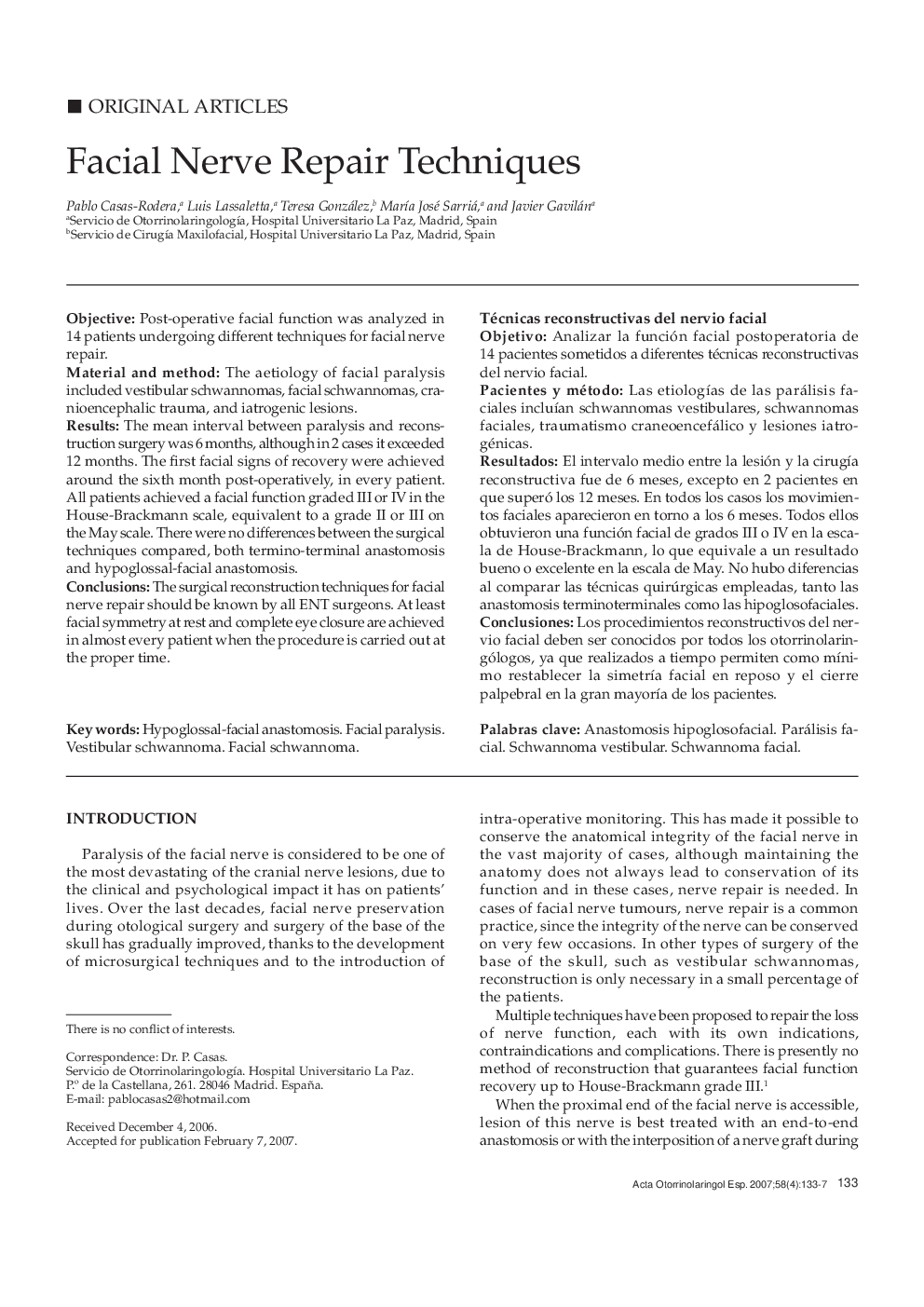| کد مقاله | کد نشریه | سال انتشار | مقاله انگلیسی | نسخه تمام متن |
|---|---|---|---|---|
| 4101389 | 1268762 | 2007 | 5 صفحه PDF | دانلود رایگان |

ObjectivePost-operative facial function was analyzed in 14 patients undergoing different techniques for facial nerve repair.Material and methodThe aetiology of facial paralysis included vestibular schwannomas, facial schwannomas, cranioencephalic trauma, and iatrogenic lesions.ResultsThe mean interval between paralysis and reconstruction surgery was 6 months, although in 2 cases it exceeded 12 months. The first facial signs of recovery were achieved around the sixth month post-operatively, in every patient. All patients achieved a facial function graded III or IV in the House-Brackmann scale, equivalent to a grade II or III on the May scale. There were no differences between the surgical techniques compared, both termino-terminal anastomosis and hypoglossal-facial anastomosis.ConclusionsThe surgical reconstruction techniques for facial nerve repair should be known by all ENT surgeons. At least facial symmetry at rest and complete eye closure are achieved in almost every patient when the procedure is carried out at the proper time.
ObjetivoAnalizar la función facial postoperatoria de 14 pacientes sometidos a diferentes técnicas reconstructivas del nervio facial.Pacientes y métodoLas etiologías de las parálisis faciales incluían schwannomas vestibulares, schwannomas faciales, traumatismo craneoencefálico y lesiones iatrogénicas.ResultadosEl intervalo medio entre la lesión y la cirugía reconstructiva fue de 6 meses, excepto en 2 pacientes en que superó los 12 meses. En todos los casos los movimientos faciales aparecieron en torno a los 6 meses. Todos ellos obtuvieron una función facial de grados III o IV en la escala de House-Brackmann, lo que equivale a un resultado bueno o excelente en la escala de May. No hubo diferencias al comparar las técnicas quirúrgicas empleadas, tanto las anastomosis terminoterminales como las hipoglosofaciales.ConclusionesLos procedimientos reconstructivos del nervio facial deben ser conocidos por todos los otorrinolaringólogos, ya que realizados a tiempo permiten como mínimo restablecer la simetría facial en reposo y el cierre palpebral en la gran mayoría de los pacientes.
Journal: Acta Otorrinolaringologica (English Edition) - Volume 58, Issue 4, 2007, Pages 133-137